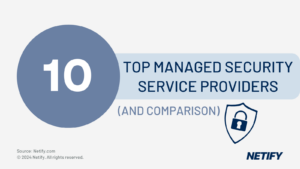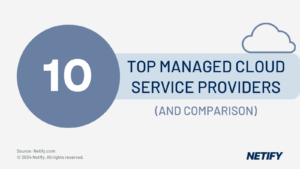| When comparing SD-WAN underlay providers, organisations should consider all available options against performance, reliability, SLA needs and whether a single-ISP or multi-ISP strategy is more applicable for business needs. |
Whilst businesses are increasingly adopting Software Defined Wide Area Network (SD-WAN) solutions to meet the growing demands on network infrastructure, the amount of solution features and benefits associated with the SD-WAN market often removes the focus on evaluating the underlay connectivity service.
This is emphasised by the requirement for strong underlying network connectivity for the ever-growing utilisation of cloud resources and Software-as-a-Service (SaaS) applications.
SD-WAN Network Underlays
There are two paths IT teams may take when evaluating SD-WAN overlay technology and the underlay network, SD-WAN and Multiprotocol Label Switching (MPLS).
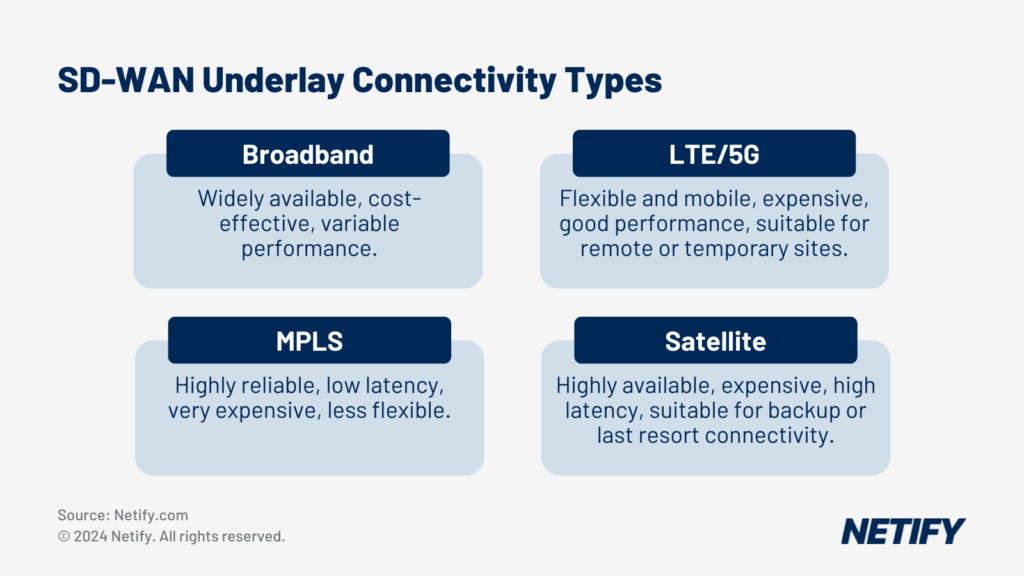
The True SD-WAN Path
For many businesses it is critical that they receive the optimal internet connection, which varies in connection type based on factors such as location, cost, proximity to provider Points-of-Presence (PoPs) and support levels.
SD-WAN can leverage multiple connections, using dynamic path selection and Quality of Service (QoS) management to ensure the best application flows are used for access to network and cloud resources, improving overall performance, bandwidth and throughput, whilst minimising latency.
Single Backbone Architecture Path
Unlike SD-WAN’s multi-path system, a legacy MPLS system can provide a single backbone approach, providing advantages for consistent application performance, similar to legacy MPLS networks.
In the days of MPLS, the WAN link topology was typically between head office and branch-office locations. With this in mind, creating a single backbone architecture makes sense to achieve consistent levels of application performance. When dealing with straight-forward HQ to branch requirements, there is no need to leverage the routing benefits of the Internet.
The Decline of MPLS
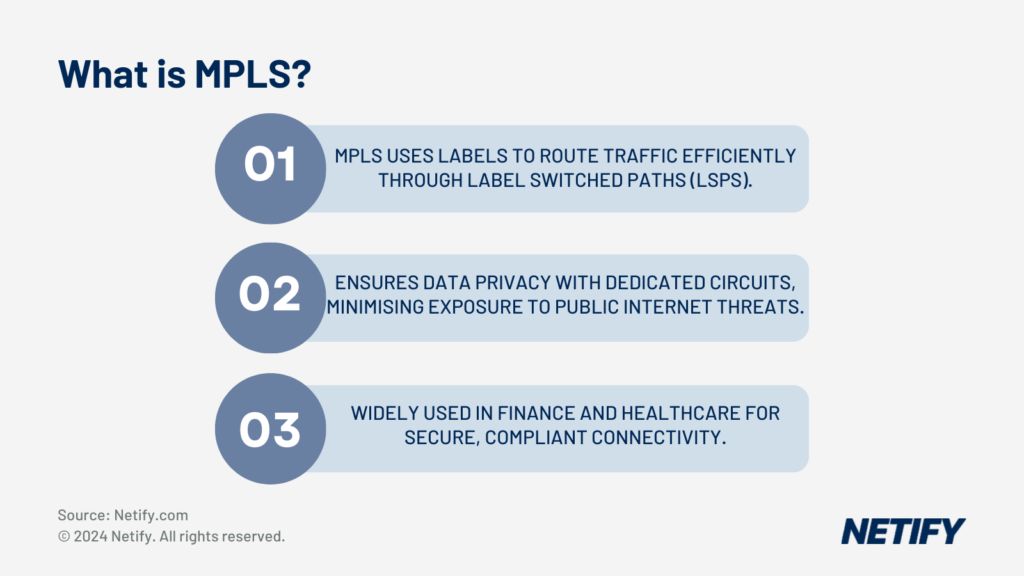
One of the reasons for MPLS declining in popularity is because the technology cannot meet the inherent challenges associated with delivering hybrid network connectivity. Businesses have increasingly adopted remote or hybrid workforces in recent years, which required widespread Cloud adoption.
In many ways, the Internet is responsible for the new working model as 4G and Superfast Broadband offer flexible user access, with some connections performing better in comparison to the user’s static office Ethernet environment. With resources typically located within the public cloud, available at geographically close access points, rather than at a centralised data hub, which can be a long distance away, the Internet is the optimal access method.
Private Backbone Networks
When considering the single backbone path, it is important to consider the differences in vendor offerings. Certain vendors are offering local VPN access into private backbone networks and data centres. In short, this architecture delivers something comparable to MPLS because your traffic is sent over a single, well scaled and engineered backbone. The industry views on SD-WAN with private backbone access are somewhat polarising; SD-WAN leaders offering the ‘pure Internet access model’ believe using a private backbone removes the benefit of SD-WAN path selection and optimisation.
Service Assurance with SD-WAN
SD-WAN simplifies the complexity of the underlay network, enhancing service assurance and reducing the impact of faults. SD-WAN can dynamically select from multiple connectivity types, such as Ethernet and Broadband, to prioritise critical applications and ensure optimal performance, with the complexity of the underlay all but hidden to the IT team. Where issues and problems occurred in the past, the fault was usually related to connectivity which may have caused a loss of revenue due to protracted fix times.
Public vs. Private Cloud Adoption
As businesses increasingly adopt SD-WAN solutions to enhance their network infrastructure, evaluating the underlay connectivity service is crucial, especially with the rise in cloud resources and SaaS applications.
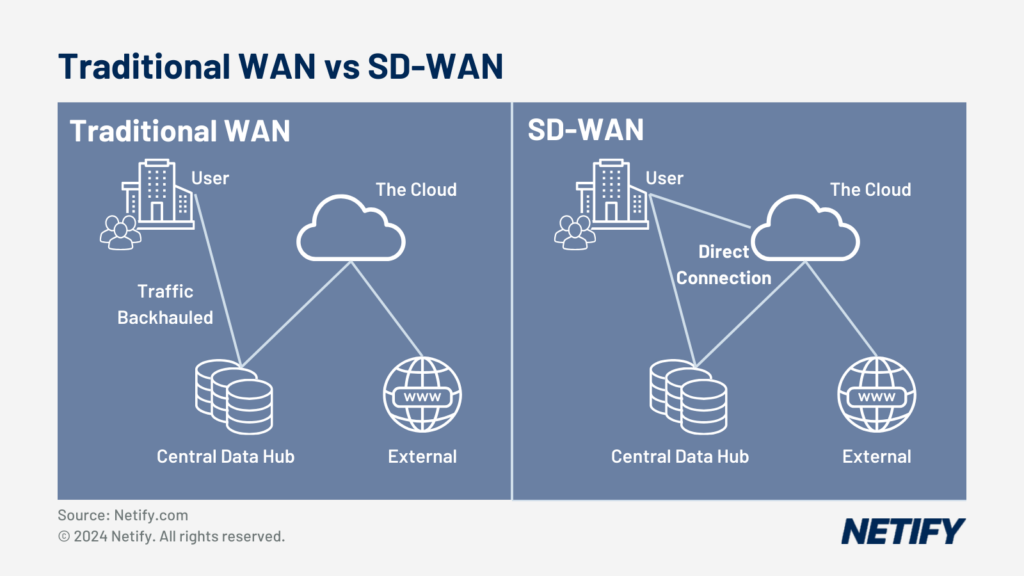
Single vs. Multi-ISP Strategy
By following the true SD WAN path, one of the benefits is cost savings because your IT team is positioned to evaluate the lowest cost provider vs your address and SLA requirements. However, thought must be given to whether or not a single ISP backbone will deliver better overall network performance, service capabilities and support.
Again, it is important to evaluate the benefits of both options for your business. While SD-WAN is the enabler to connecting any ISP connection, multinational Enterprise business should consider and weigh up multiple and single provider underlay.
Evaluating Multiple-ISP SD-WAN
A multi-ISP setup can introduce challenges such as underlay latency, jitter, SLA inconsistencies, and support complexities. Adding low-cost secondary circuits may not guarantee true network diversity for redundancy. However, in cases where using multiple ISPs does offer better diversity for redundancy, it can complicate SLA management and support.
Evaluating Single-ISP SD-WAN Underlay
Using a single ISP can provide more consistent network performance and easier troubleshooting. Dealing with a single provider simplifies support and SLA management, though it’s still important to ensure no single points of failure exist.
Identifying Suitable Providers
The Netify pricing tool is available to research up to 20 sites online (more via Spreadsheet). Our research team is positioned to ascertain which service providers are within reach of your office address including availability for Ethernet, 4G, 5G and Broadband.
Types of Underlay Connectivity
Ethernet: Ethernet connections are available in speeds of 100Mbps, 1Gbps, and 10Gbps.
Broadband: Broadband options include FTTC (Fibre to the Cabinet) and FTTP (Fibre to the Premises).
Wireless: 4G and 5G wireless connections may be suitable for some SD-WAN underlay scenarios.
Conclusion
Thoroughly evaluating SD-WAN underlay providers is essential for IT teams to ensure the performance, reliability, and agility needed to support modern business applications. By understanding the key considerations and using available tools, organisations can make informed decisions when selecting an SD-WAN vendor.
